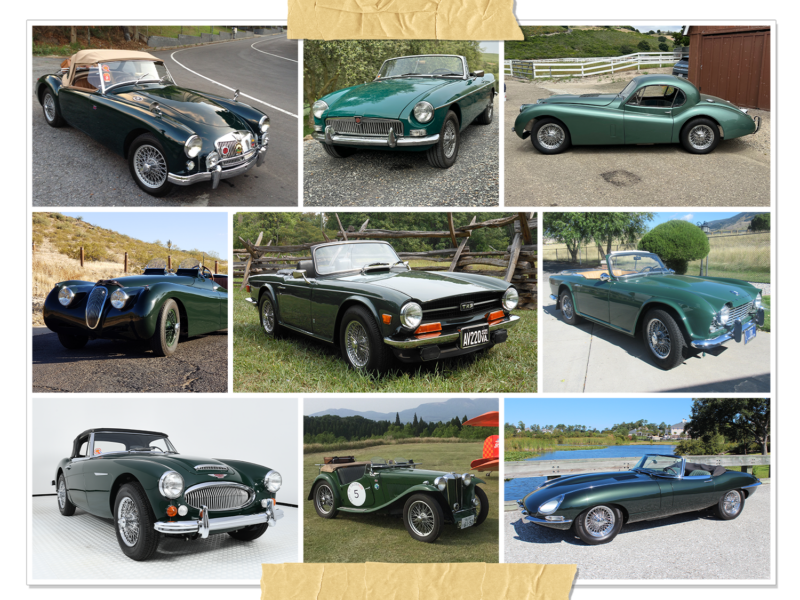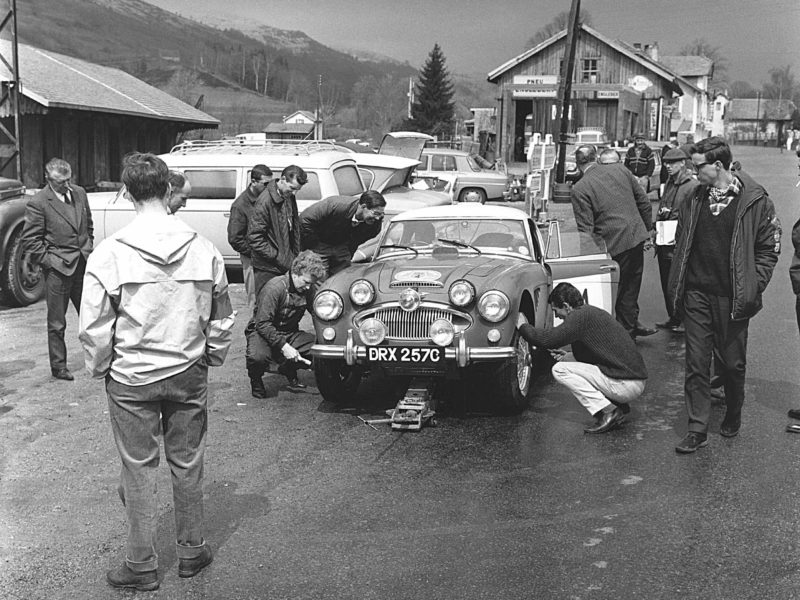When Count Giovanni “Johnny” Lurani took the starter’s flag at Brescia beginning the 1933 Mille Miglia, the young nobleman already had been racing sports cars for nearly a decade. The previous year. 1932, had seen the already famous amateur finish 9th overall in an Alfa Romeo 6C 1750. The 1933 event saw British cars competing for the first time in the thousand mile contest that was held annually over open roads on a course that took the racers, often several hundred in number, from Brescia to Rome and return.
Count “Johnny” Lurani was known and well liked in England, where he had posted impressive victories at Brooklands, becoming acquainted with many top rank British enthusiasts. It should come as no surprise to learn that the wealthy Italian was the spark that placed a team of three MGK3 Magnettes on the starting ramp in 1933. Five well regarded English drivers comprised the balance of the MG entry. Paired with Lurani was Captain George Eyston, while Sir Henry “Tim” Birkin. one of the famous Bentley Boys, shared a car with Bernard Rubin. Earl Howe and Hugh Hamilton drove the team’s third car. Tragically, 1933 was to be the final year for Birken and Hamilton, both of whom died within months of their Mille Miglia drives.
Team strategy dictated that Birkin and Rubin should set the early pace in the hope that they would lure main competitor Maserati to self destruct. While the plan worked, the Birkin Hamilton car became a casualty at about the one third point between Siena and Rome. Tuffanelli and Bertocchi were forced to retire their second place Maserati 4CTR-1100 spider at about the same time, due to an overworked gearbox. This put the Lurani Eyston Magnette in the class lead, where they remained to the finish, arriving back in Brescia less than two minutes ahead of the identical MG of Hamilton and Howe. Both cars completed the 1,022 mile race over some of the world’s toughest roads in Just over 18 hours, eclipsing Maserati’s previous record by more than half an hour.
1931 saw Lurani again entered in the Mille Miglia at the wheel of one of the four supercharged MGs entered. One of that year’s MG entries was the very K3 with which Nuvolari had won the 1933 Tourist Trophy in one of motor racing’s most legendary demonstrations of courage and ability. The 1934 Mille Miglia effort ended with only the Lurani/Penn-Hughes car taking the checkered flag, the others having dropped out along the way. In 1933, the MGs had been fitted with Powerplus superchargers and high compression engines that produced 114 bhp at 7,000 RPM. For 1934. Marshall superchargers were fitted, compression was lowered slightly and output was increased slightly, to 120 bhp at 6,500 RPM. The MG’s Wilson preselector gearboxes had worked faultlessly both years.
We spent two days with “Johnny” Lurani in 1991, first at a concorso di eleganza on Milan’s Via della Spiga, where the 86 year old legend was a judge and his daughter’s 1914 Standard was one of the three dozen entries. Then, the following day was spent at the multi-faceted aristocrat’s villa north of Monza. where the veteran of hundreds of competition events between 1926 and 1956 showed us the trophies and other mementos that chronicle one of the world’s most illustrious automotive careers. Included were six class victories in nine Mille Miglias, three Targa Florios, one partnered in a Healey with Aldington of Frazer Nash fame. In the Lurani garage at Cernusco, we had the chance to view Nibbio I, a Moto Guzzi powered special with which the nobleman established more than a dozen small displacement world records in the 1930s. Nibbio II, a second streamliner engineered and driven by Lurani, is on permanent exhibit at the Biscarctti Museum in Turin.
The walls of Count Lurani’s garage are covered with signatures of more than 400 automotive greats who have been guests at Cernusco during nearly three quarters of a century.
Notable among Count Lurani’s other motor sports accomplishments were the introduction of the gran turismo classification in the Mille Miglia shortly before WW II, as well as the creation of Formula Junior, for which he was honored at Elkhart Lake in 1988.Though he never competed in the United States. Lurani served as an FIA steward al Sebring several times. Perhaps the closest he came to actually racing in this country was in the 1940s when he turned some practice laps at Indianapolis at the wheel of a Maserati.
About the K3 Magnette
The K3 Magnette pictured here, with which owner Gary Byrd frequently competes in vintage races, is a bolt-by-bolt authentic reproduction made mostly from genuine period MG parts. This fine example is actually more “original” than most surviving “genuine’ K3s. These 6 cylinder l,086cc thoroughbred machines contributed much to MG’s early racing heritage. What is purported to be the actual Lurani/Eyston MG from 1933, Chassis #003, was entered by its present Australian owners in the 1991 Mille Miglia retrospective. In fact, the annual Mille Miglia retrospective includes among its many entries more cars of British manufacture than from any but the host country, Italy. As for “Johnny” Lurani, he never has become involved in this latter-day rally that today is perhaps the top event on the worldwide calendar of vintage auto events. It doesn’t present enough of a challenge to lure him from the memories of his nine real Mille Miglias.
Questions for Every British Car Enthusiast
How many K3 Magnettes were built? How many survive? What, in addition to the Mille Miglia and Tourist Trophy were their major successes? What was the highest finish by a Jaguar and in what year? Do you know the same for MG, Austin-Healey, and Triumph?
Harry Newton







'Italy’s Count Lurani- Aristocrat, Racer and More' has no comments
Be the first to comment this post!